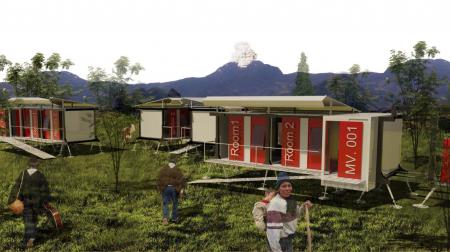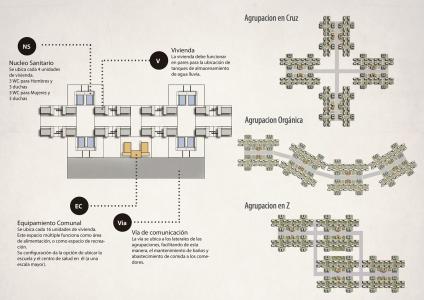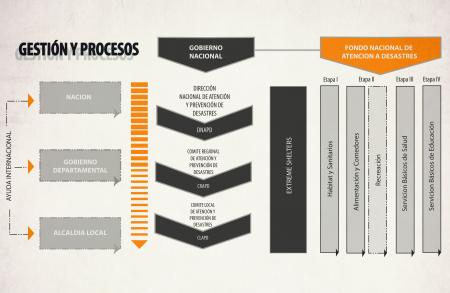| |
Extreme Shelters
Genoy, Léogâne, Mahm, Colombia, Haiti, Pak
Tomas Santacruz
Pontificia Universidad Javeriana, Bogota, Colombia
Mercedes Miglianelli
Full Document (PDF)
Abstract
Not all Governments have the same response capacity after suffering from Natural Disasters. This creates some countries more vulnerable than others and more suitable places for shelters projects to exist.
Taking climate as common element in a list of countries at highest risk of suffering natural disasters, Extreme shelters works in 3 climatic zones, the tropical areas, the desert areas and the high mountain areas. These 3 Geographic locations were chosen as a result of investigating and concluding that they were a match with the most vulnerable nations at risk of suffering natural disasters.
After considering all this, a common module is thought to appear as a response to the problem, a shelter that will identify the various conditions of temperature, humidity and rainfall, to later adapt to its location by changing its pieces.
A small architectural matrix is created to easily select those parts as well as to simplify its urban structure depending on the territory it’s being built on. By creating a temporary Citadel, Extreme shelters grantees services that accompany the victims and helps satisfy the needs of these temporary housing modules. This is how this is a proposal that can be easily used in any region that meets the climatic characteristics previously mention, offering a temporary solution for the victims affected by natural disasters.
|
| |

image of the settlement (architectural scale or example of unit)

image of the settlement (urban scale or group of housing units)

diagram of the actors involved and the relationships between them
|
|



